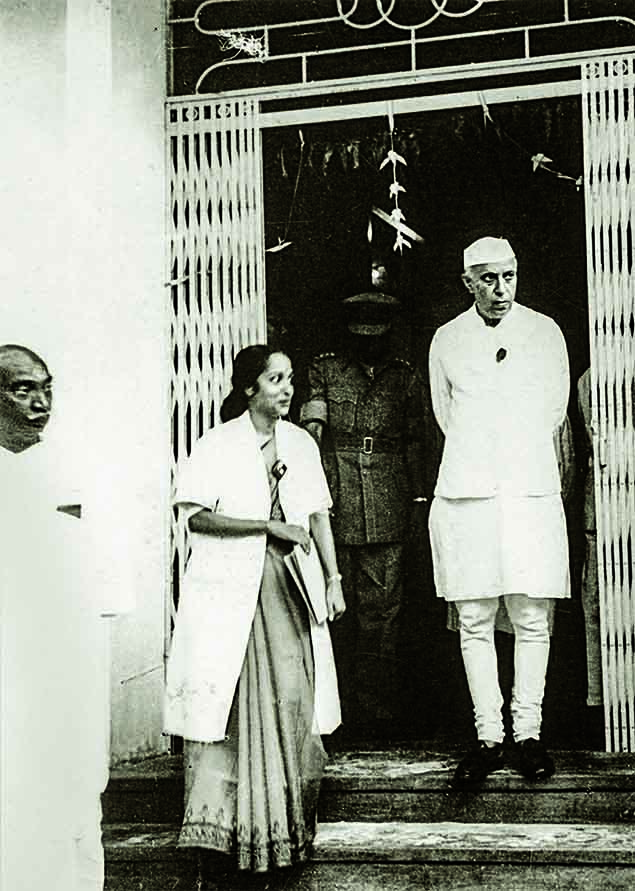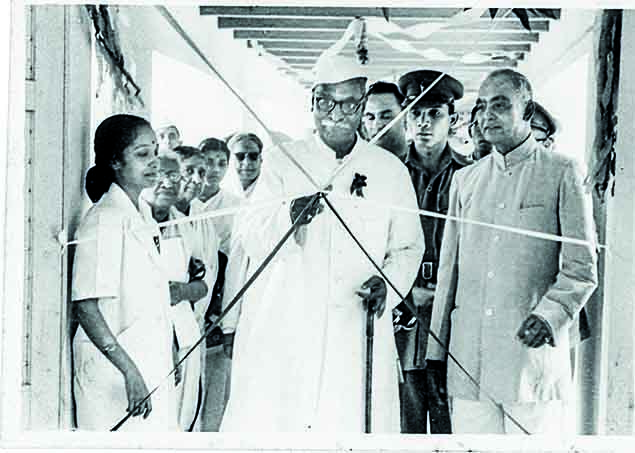Dr V Shanta
This is a collection of articles archived for the excellence of their content. |
A brief biography
Kamini Mathai and Pushpa Narayan, January 20, 2021: The Times of India
(The writer is director of Cachar Cancer Hospital and Research Centre, Silchar, Assam)

From: Kamini Mathai and Pushpa Narayan, January 20, 2021: The Times of India

From: Kamini Mathai and Pushpa Narayan, January 20, 2021: The Times of India
For 65 years, Dr V Shanta had made Cancer Institute (WIA) her home, in more ways than one. The 94-year-old doctor – the country’s most well-known and loved oncologist – lived on the top floor of the hospital, in a makeshift home.
For years she lived out of a single room and then expanded her home to include a living room, bedroom and study. “I don’t need more than this. I like to spend all my time with my patients,” she had told TOI in an interview in 2012.
As doctors, we need to remember that every patient has entrusted us with their lives
The pioneer doctor, chairperson of the Cancer Institute, died in a private hospital in Chennai early morning on January 19. Up until 8.30pm the day before, she continued to do her work. Led by PM Narendra Modi, leaders cutting across party lines condoled her death. "Dr V Shanta will be remembered for outstanding efforts to ensure top quality cancer care," said PM Modi. Tamil Nadu CM Edappadi K Palaniswami said,"Dr Shanta spent her lifetime rendering service to those affected by cancer by providing treatment at no or low cost...and educating people on the need to undertake tests frequently to check for cancer." DMK president M K Stalin said, "The level of awareness that Dr Shanta created about cancer is unparalleled not only in India, but also the entire world."
Her body was placed at the Cancer Institute building in Gandhi Nagar, where all through the day, patients, doctors, and well-wishers came in large numbers to pay their respects. "If I die, sprinkle my ashes all over the institute. I don't want to leave this hospital," she had told hospital administrators and doctors over the weekend when she experienced some chest discomfort.
Among those who were devastated was Kalpana Ravindrakumar, cancer survivor and wife of a daily wage labourer, who had come from Andhra Pradesh to meet Dr Shanta, but was informed instead of the oncologist’s death. “Six rounds of chemo and 20 sessions of radiation, Dr Shanta took me through it like a mother,” said Kalpana, who along with several other patients and doctors walked beside the hearse from the institute to the cremation ground in the city's Besant Nagar.
Dr Shanta got her MBBS degree in 1949, and six years later, joined the institute established by the Women’s Indian Association (WIA) Cancer Relief Fund as a resident medical officer. The institute began with just two doctors, two nurses and 12 beds. Today, the world renowned cancer centre has grown to an over-500 bed hospital where 40% of the patients are treated free of cost.
At the beginning of her career, Dr Shanta said, she had made up her mind to dedicate her life to her patients. She felt it gave them confidence to know their doctor was with them in the hospital, which was why she chose to live there.
“Dr Shanta knew the condition of almost all patients in the postoperative ward,” said her student and onco-surgeon Dr C S Mani. “As a student, I saw her sit beside a patient for 48 hours without a break. She was 70 years old at the time,” he said. Well into her 90s, Dr Shanta continued to do rounds of the hospital, at times using a walking stick. “I was amazed at her energy,” says architect Sujatha Shankar who interacted with her for more than 30 years, first as a caregiver, then as an architect who volunteered her services in building the pediatric oncology centre, and finally, last year, as a patient. “Though petite in appearance she had a towering personality.”
Dr Shanta was the recipient of various coveted honours, including the three Padma awards and the Ramon Magsaysay Award. In her lifetime, she received more than 40 awards from public and private organisations for her contribution to the management and control of cancer. The awards would lie scattered around her house - some behind cupboards – but hardly any found a place on her walls. Awards, she said, held no meaning for her.
What she had kept proudly on display though were three conches, hand-painted by a patient – a driver named Narayanan, who would visit her every time he passed through Chennai. Fifty-two years later, she could recount every detail of his diagnosis and treatment. “As doctors, we need to remember that every patient has entrusted us with their lives. We need to understand the responsibility we are taking up,” she had said.
No one understood it better than Dr Shanta.
I heard about Dr Shanta for the first time from a soldier in a train. I was in Class VIII then. “You must become a cancer doctor and be like Dr Shanta,” he had said.
Many years later, I was among the students mentored by Dr V Shanta and Dr S Krishnamurthi to become cancer specialists. According to Dr Krishnamurthi, Dr Shanta was a 'karmayogi'. She was simple and approachable. I wrote to her as a young surgeon and she wrote back asking me to come for an interview.
On rounds, patients would request her to touch them for they believed her touch would cure them. When she would visit the children’s ward, the kids would run and hug her leaving grubby palm prints on her coat. She would be delighted to see them.
It was her idealism combined with people management skills that gave life to much of Dr Krishnamurthi’s vision for the institute. Every activity bears her stamp. For her, every patient had to be treated the way one would treat a close relative. She expected every staff to take ownership of the institute — a leaking tap, a fan whirling in an empty room or a broken tile had to be attended to by whosoever saw it. She was a stickler for time and could be caustic if anyone was late. But then she would ask about the families of the staff at the Institute and rejoice in the successes of their children. She did not hesitate to call principals and administrators to facilitate school and college admissions for them.
After I left the institute and joined a small hospital in Silchar, Assam, I would visit her every time I came to Chennai. She would insist on me staying over for dinner and serve the food herself. While leaving, after touching her feet, I would be enveloped in her arms, fragile with age, for a hug. She would walk me out and wait till I turned the corner into the staircase. It was her way of saying, she cared, for everyone, always.